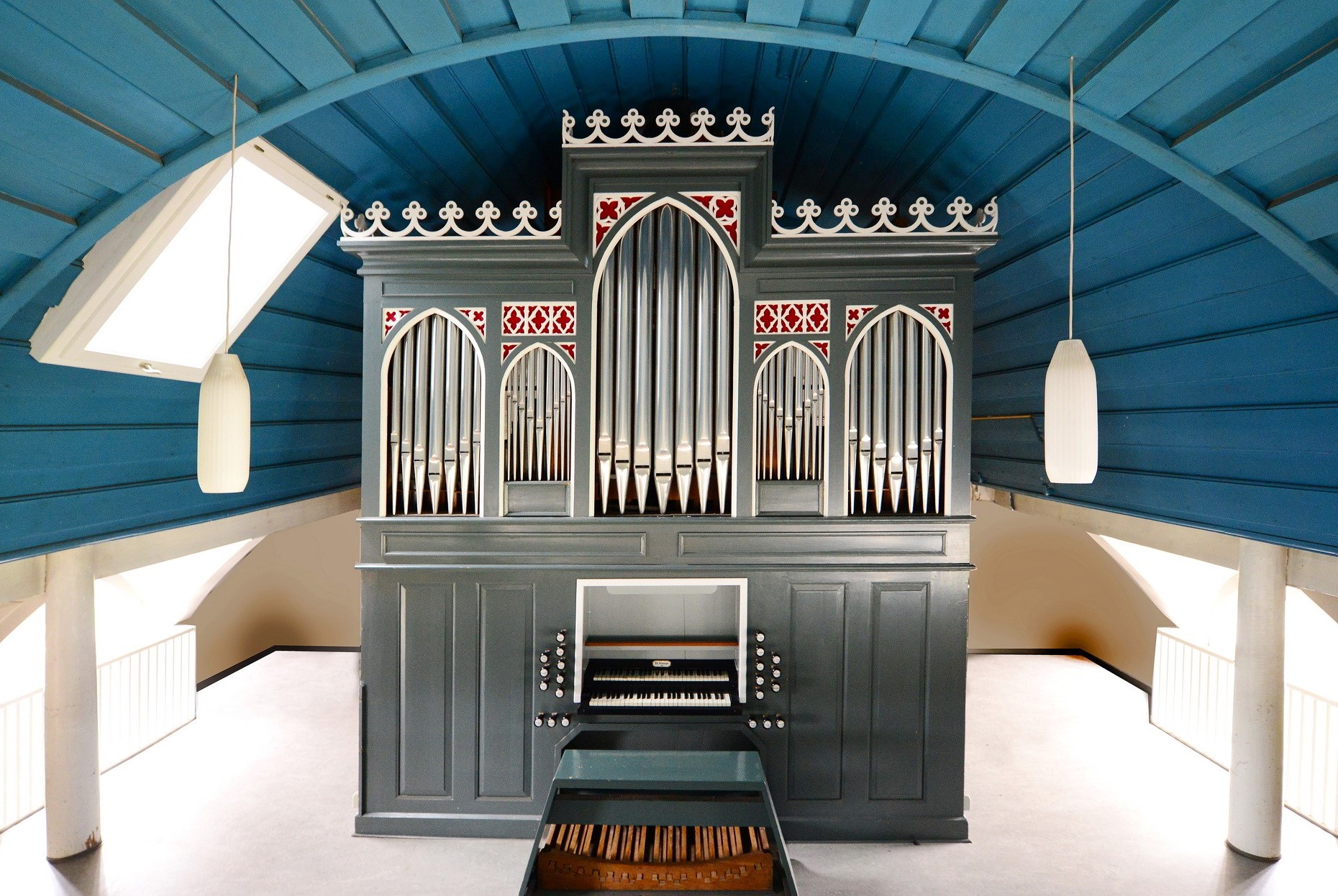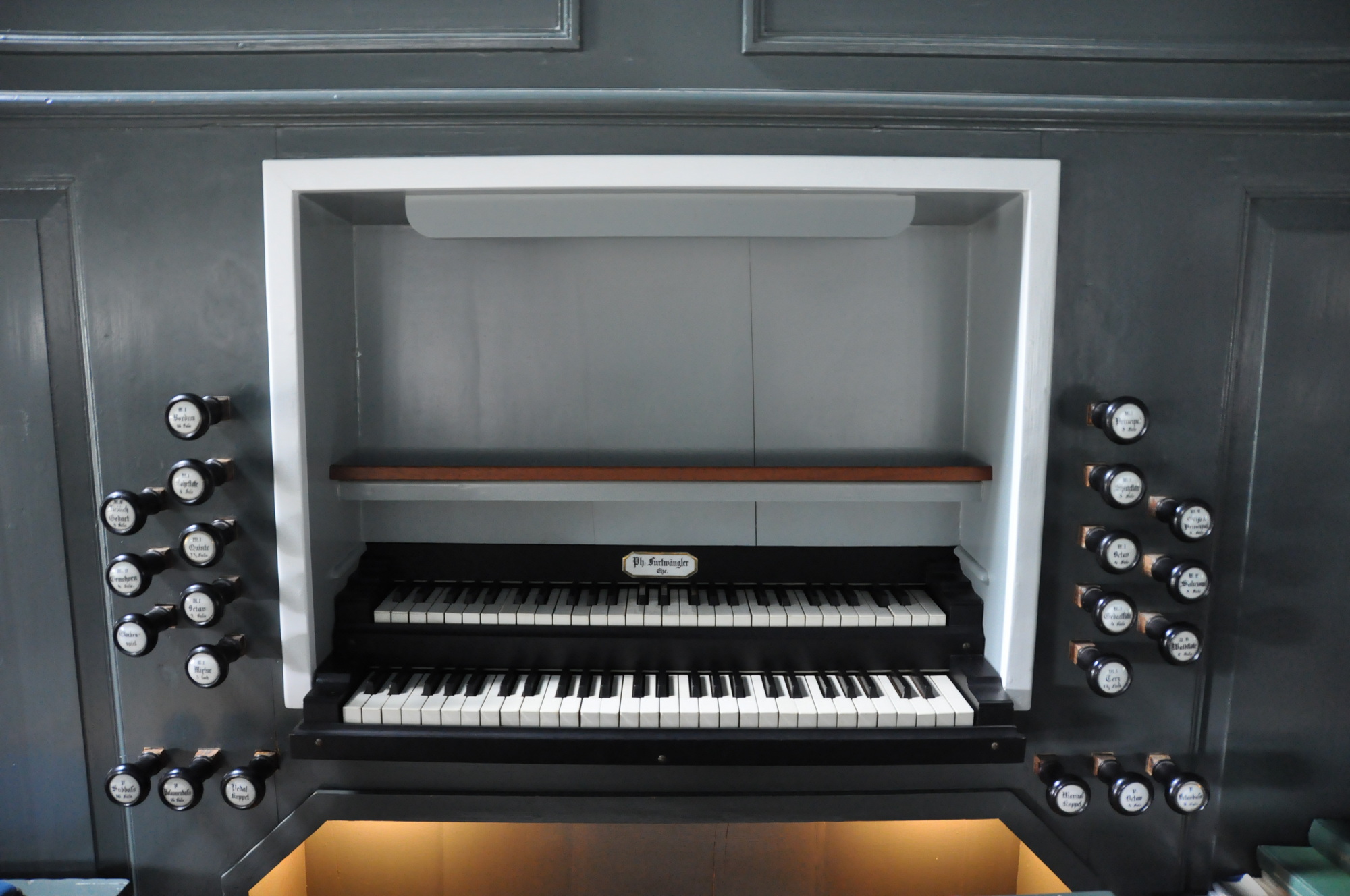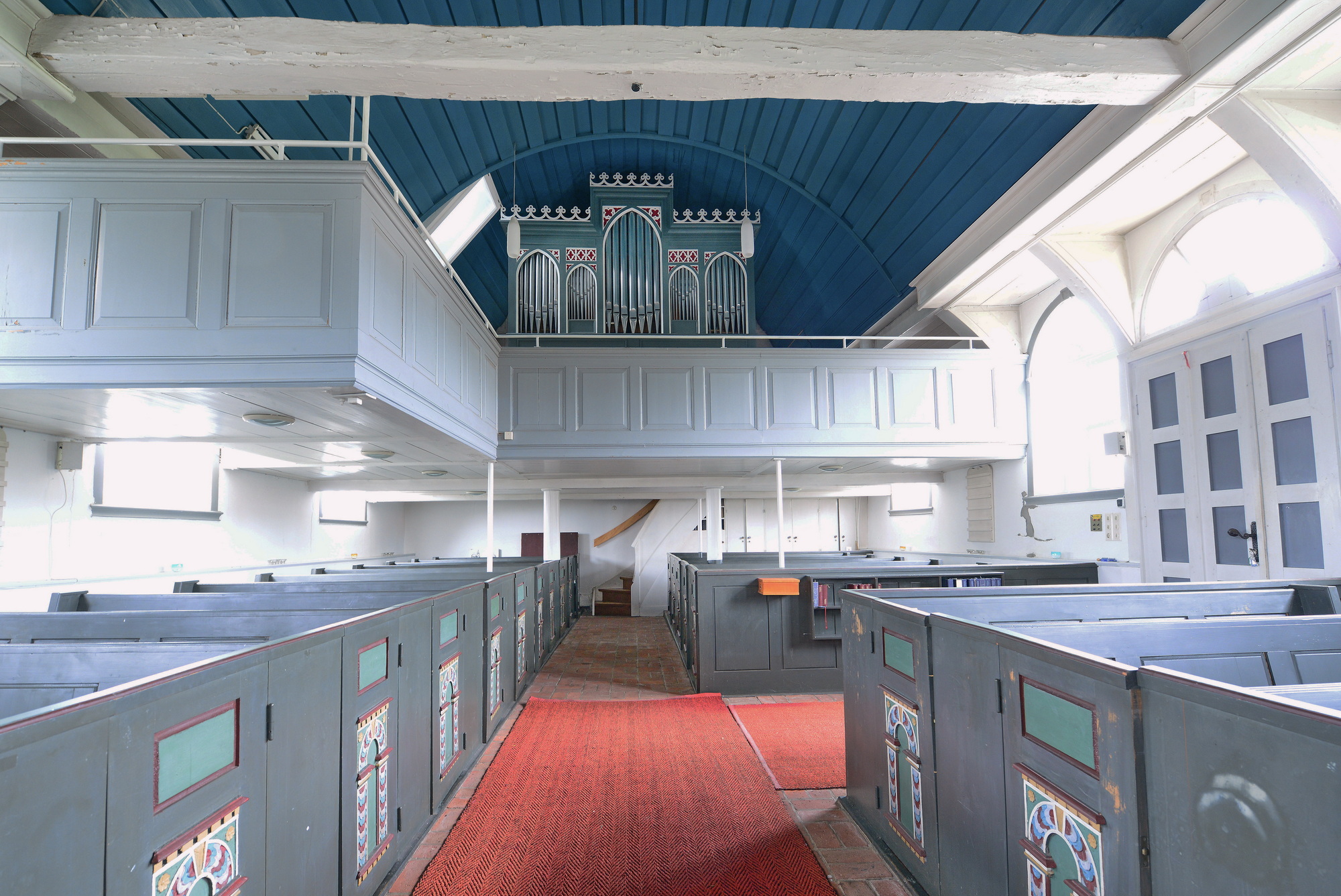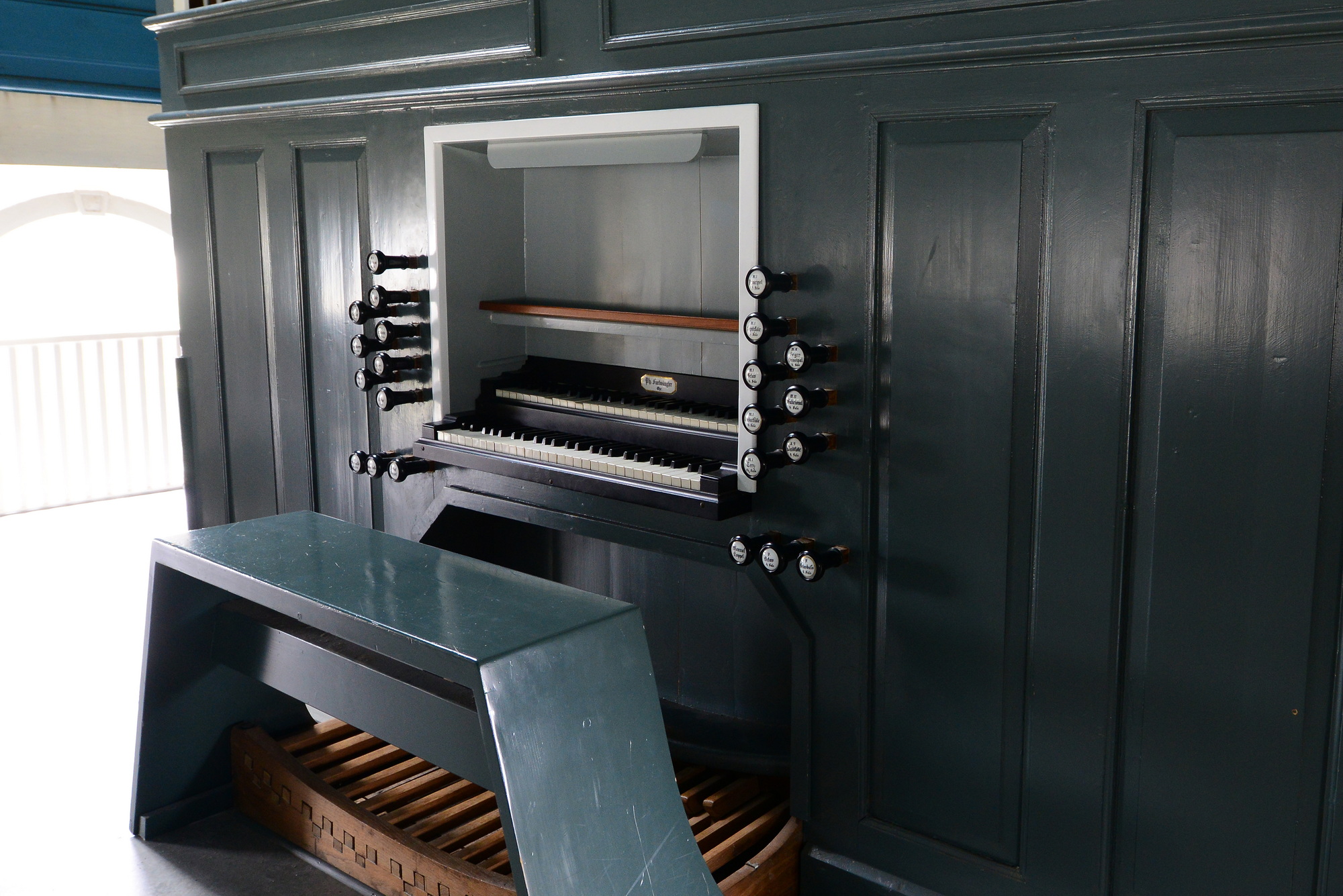Twielenfleth, St. Marien
| Builder | Furtwängler & Hammer |
|---|---|
| Year | 1861 |
| Period/Style | Romantic |
| Stops | 19 |
| Keyboards | 2+P |
| Keyaction | tracker/mechanical |
| Tuning | Equal |
The St. Marien Church in Twielenfleth originally had a small organ with eight registers, likely built by Arp Schnitger in 1689. In 1861, a new organ with 19 registers was constructed by Philipp Furtwängler from Elze, featuring two manuals and a pedal. Remarkably, the organ has been largely preserved in its original state, with the only major change being the removal of the tin Principal 8’ from the organ's façade during World War I for war purposes.
In 1988/89, the organ underwent a thorough restoration by the organ-building firm Gebr. Hillebrand, which included the reconstruction of the missing Prospektprincipal. The Furtwängler organ stands as an excellent representation of the romantic organ-building tradition, while still being rooted in the baroque style. Its restoration has helped preserve the integrity and sound of this significant historical instrument.
In 1988/89, the organ underwent a thorough restoration by the organ-building firm Gebr. Hillebrand, which included the reconstruction of the missing Prospektprincipal. The Furtwängler organ stands as an excellent representation of the romantic organ-building tradition, while still being rooted in the baroque style. Its restoration has helped preserve the integrity and sound of this significant historical instrument.
| Hauptmanual | Positiv | Pedal |
|---|---|---|
| Bordun 16' | Geigen-Principal 8' | Subbaß 16' |
| Principal 8' | Salicional 8' | Octavbaß 8' |
| Rohrflöte 8' | Lieblich Gedact 8' | Octav 4' |
| Spitzflöte 8' | Gemshorn 4' | Posaunenbaß 16' |
| Octav 4' | Waldflöte 2' | |
| Gedactflöte 4' | ||
| Quinte 2 2/3' | ||
| Octav 2' | ||
| Terz 1 3/5' | ||
| Mixtur 3f |
No Video/Audio samples available.
https://nomine.net/orgel/twielenfleth-st-marien/
 Pipe Organ Map
Pipe Organ Map


